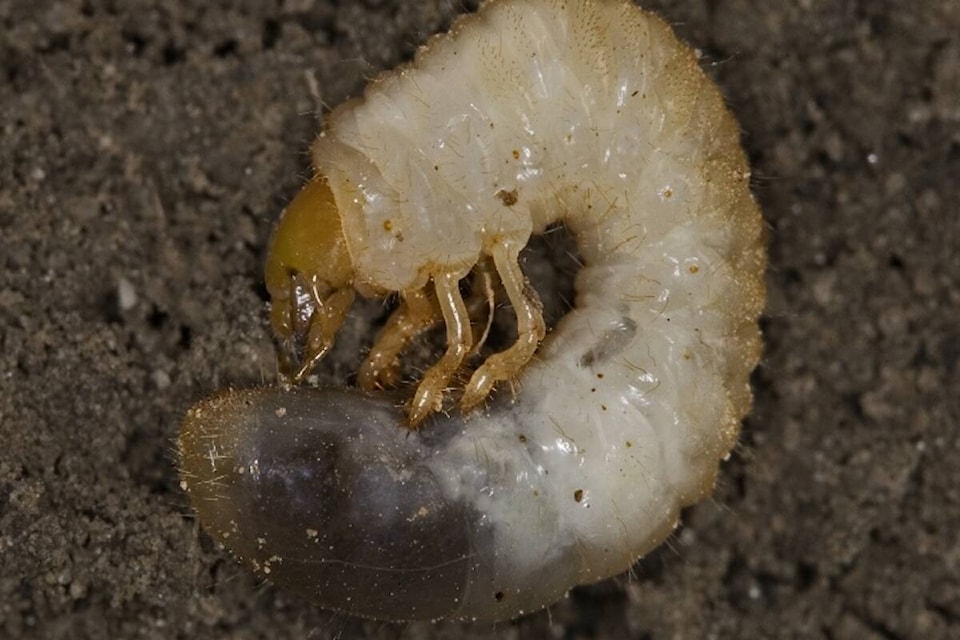The Columbia Shuswap Invasive Species Society (CSISS) confirmed a recent infestation of the European Chafer beetle in Revelstoke.
Last week, the community Facebook page was alight with discussion of an infestation. The European Chafer beetle was spotted in a few properties in Arrow Heights, prompting CSISS to take some samples to confirm. Executive director of CSISS, Robyn Hooper, spoke about the infestation and how to prevent further spread.
Hooper explained that CSISS first received a report in early May.
“Right now, it’s just the larvae that we’re seeing,” said Hooper.
In their life cycle, the beetles go through several phases, but this time of the year they’re still small larvae known as grubs.
“What’s interesting is we had looked at a similar beetle a few years ago, but what’s tricky about the beetle was that there are several native lookalikes,” said Hooper.
CSISS dispatched a technician with an entomology background to confirm the type of beetle.
At this stage of the beetle’s life cycle, it’s still just a small grub, which is what the technician had to examine. To confirm the species, the technician had to count the number of hairs on the grub, which can be a painstaking process. After collecting some samples and looking at it under a microscope, CSISS were able to confirm the species of beetle before sending it to the Ministry of Agriculture for further inspection, grub hair counting, and confirmation.
READ MORE: We now present the beetles: European Chafer beetle spotted in Revelstoke
Hooper said that while the infestation is a nuisance, the beetles aren’t a regulated species, which means the threat isn’t too severe.
“An example of that would be zebra and quagga mussels. That’s a prohibited species, and one that you see the watercraft inspections for,” said Hooper before adding, “just because it’s not regulated, doesn’t mean it isn’t going to cause economic and just aesthetic issues for landowners.”
The grubs at this stage do damage to the land by eating away at the roots of sod, but other animals like raccoons and birds dig into the sod to eat the grubs.
“It’s kind of this double whammy,” said Hooper.
The infestations can be treated later in the summer and early fall with pesticides or nematodes, as that’s the best time in the beetle’s life cycle to prevent further infestation.
Hooper recommended not to remove any sod where the grubs have been spotted as it could further spread the beetles to more areas, especially agriculture regions.
For more information about the beetles, visit the Ministry of Agriculture’s website.
For more information on how to avoid spreading invasive species, visit the CSISS website to learn more.
READ MORE: Two cougar sightings in Revelstoke in less than a day
@ZacharyDelaney
zach.delaney@revelstokereview.com
Like us on Facebook and follow us on Twitter and subscribe to our daily and subscribe to our daily newsletter.
